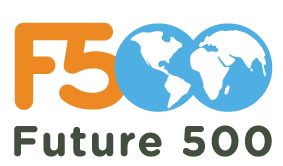Generation Who? Three Tactics to Avoid Millennial Fatigue
I don’t know about you, but all these panels and PowerPoints over-analyzing the “Millennial” generation are making my head spin. Marketing and branding strategists seem to be obsessed with defining a group of 75 million-plus Americans (according to Pew Research Center, anyone born between 1981-1997) as if they are more unified in character than they really are. This abstract term has adopted subcategories like “hipster” or “bro” – once specific designations, but now part of a lazy vocabulary meant to categorize huge and diverse segments of our society.
“Anyone from the stakeholder engagement world can tell you no audience responds well to being misidentified.”
Despite my Andy Rooney inspired kvetching, I do understand and appreciate the desire to tap into the nation’s most populous generation. It’s a potent, resilient human resource with tremendous upside, and our approach begs some serious strategic refinement. Anyone from the stakeholder engagement world can tell you no audience responds well to being misidentified. Millennials are no different. Keep the following in mind the next time you want to engage GenY. Their sub-goldfish attention span will thank you.
Define “Millennial”
At a recent sustainability conference, I stopped into a presentation on “Engaging Millennials.” The cynic in me anticipated the same tired talking points, bland slide decks about entitled this and social media that, but I remained open-minded toward any new, keen insights that might benefit our seemingly engaged (decidedly non-millennial) crowd. Right off the bat, the speaker made the vexing decision to use the terms “teen” and “millennial” interchangeably throughout her presentation.
Her categorization is not technically wrong due to the wildly fluid age parameters attributed to this generation. When a “Millennial” can be as old as 34 and as young as 12, the definition becomes increasingly obscured. Are you talking to young parents who reminisce about burning CDs for high-school crushes, or the tween snapchatting their quinceañera? Are you talking to someone who remembers Michael Jordan as the greatest basketball player of all time, or as a crying meme?
In many millennial communication strategies, the answer is all of the above. People from radically different backgrounds and experiences have been crammed into a single group identity. The distinction is crucial– without it, you undermine the entire effort.
If you want audiences to stay engaged and follow your thinking please, at the very least, introduce some specificity into your target audience.
Include Millennials in the discussion
As we’ve learned from PayPal’s flub, it’s never a good look to host a discussion about a group of people who are either severely underrepresented in or even absent from that discussion. If you’re a Millennial talking about Millennials without other Millennials present, you are at risk of tokenism. If you’re a non-Millennial talking to other non-Millennials about Millennials, you need to surround yourself with friends and colleagues who can help you make better life choices because you’ve run aground.
“There is an ocean of perspective between GPS and digital music libraries vs. landlines and roadmaps. ”
Millennials are capable of speaking for themselves. If you’ve followed tip #1, you know who your audience segments are and where to find them. Do your research on what settings and platforms appeal most to them. Like in any good stakeholder engagement strategy, find your common ground and engage them. Let them guide the discussion, respond to their needs and your risk of pandering and appropriation will drastically diminish.
Understand Moore’s Law and its Effect on Generations
Ask yourself: Does it even make sense to be talking about Millennials as a contrived generational unit? I get that it’s en vogue to generalize about habits and personalities, but is this a practice we should be continuing?
When contemplating this issue I think about Moore’s Law and how rapid technological advances have shaped how we think and interact with the world. I would contend that because technology shapes our society, and because it has advanced so rapidly over the past 20 years, the distinctions between ages within a generation are so stark as to render generational groupings moot.
As an older Millennial, you likely grew up without the Internet culture, mobile technologies and apps that dominate our present society. For those closer to Y2K, much of your social life is based around or within these networks. That distinction is more than just superficial. There is an ocean of perspective between GPS and digital music libraries vs. landlines and roadmaps.
These changes have occurred over a fraction of the time that conventionally defines generations. The eras of 20th century society developed over years and decades– now, technology facilitates societal shifts at a much faster rate. Demographics must scale with advancements in thought and lifestyle. Otherwise, our terminology becomes broad to the point of seeming archaic and out of touch.
At the same time, generations traditionally require some time to crystallize. It’s a tough, perhaps misguided proposition to attempt to identify overarching themes when they are still in development. Time may widen the lens enough to view the full Millennial picture. For now, we must do our part to avoid sweeping generalizations and mischaracterization.
“The pool of Millennials is wide, but a shotgun approach will yield diminishing returns.”
Conclusion
In more cases than not, a conversation about Millennials will be a tedious rehash of well-covered ground. However, if you do feel like you have novel insights about Millennials ensure that you have not only considered the above tips, but that you also don’t lose sight of your real goal: to know and communicate with your audience.
There is plenty of research showing Millennial interest in sustainability, for example. It may be tempting to pander to one of the typical Millennial trappings, cat picture here, but a meaningful conversation will center on the motivations behind that research. Focus on the “why,” not the peripheral “what.” The pool of Millennials is wide, but a shotgun approach will yield diminishing returns. Some millennials support renewable energy to ensure a healthy atmosphere for their children. Others may be peer-motivated to purchase environmentally-friendly products. Speak to those specific needs, and you’ll find that “Generation Me” is no different from the GI Gen or the Baby Boomers– diverse voices that deserve to be heeded.
Future 500 is a non-profit consultancy that builds trust between companies, advocates, investors, and philanthropists to advance business as a force for good. Based in San Francisco, we specialize in stakeholder engagement, sustainability strategy, and responsible communication. From stakeholder mapping to materiality assessments, partnership development to activist engagement, target setting to CSR reporting strategy, we empower our partners with the skills and relationships needed to systemically tackle today's most pressing environmental, social, and governance (ESG) challenges.
Want to learn more? Reach out any time.
Marvin Smith is a former Future 500 team member. He currently works for the Sustainability Accounting Standards Board (SASB). Connect with him on LinkedIn.
More from our blog:















